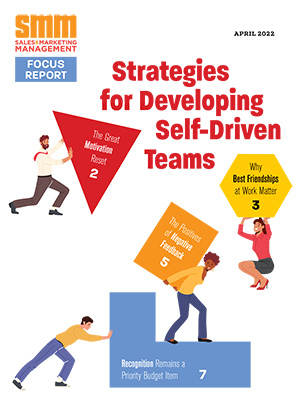If another sales quarter ends with your sales team lagging behind the target revenue number, it may be time to consider the underlying causes – and not just the symptoms.
More often than not, sales team failure is blamed on the classic “forces outside of the sales team’s control” line. We’ve all heard these refrains before: marketing didn’t train our sellers properly; the executives put in place a mediocre corporate or account strategy; or the company has bad products that the sales team is forced to sell.
Once in a while, the sales team will fess up to issues that are inside their control. And too often it’s simple things like: lack of sales force automation (SFA) system adoption; missed opportunities; and too many offline processes that result in time wasted.
Because those pesky “forces outside our control” will always be a narrative, let’s focus on what SFA buyers can control and look at three key root causes – the three C’s, as I like to call them – that need to be addressed immediately:
Promises that are too good to be true about COST– Most buyers have been lured in by clever marketing for cloud-based SFA systems. They think that getting something up and running in weeks will solve their issues. Why bother thinking about the costs (and risks) associated with system integration, security or vendor up-sell costs and lock-in? SFA buyers are paying a premium for functionality that, at best, meets only a portion of their needs, and costs them an arm and a leg when you add up all the per user, per month licenses and development and lifecycle maintenance costs – even for cloud systems.
Functionality that isn’t ready for enterprise COMPLEXITY– I’ve never met a Sales VP that used the exact same sales method as his/her predecessor. Nor have I ever seen a sales organization and its associated sales model stay static or be ‘simple’, especially in regulated industries like insurance, financial services, communications and healthcare. And I’ve never seen a sales manager or seller say, “No, I have no interest in knowing what marketing campaigns/open service cases might impact my next sales call.” Today, all of this complexity is inherent in SFA and CRM systems. It’s up to the SFA buyer and their business and IT teams to work around this complexity and bear the cost of it.
Lack of COMMITMENT by management to return value to reps– I’m the first to agree that the SFA software implementation track record is pretty miserable. Several studies have shown that anywhere from 20 percent to over two-thirds of all projects have failed to live up to expectations – or failed outright. The prevailing sentiment is that SFA project failures are driven by lack of rep adoption, but this just isn’t true. SFA is easy to buy, use and deploy for reps and managers alike. What’s really going on is a lack of commitment by sales reps to use the system because it is not returning value to them in their day-to-day efforts. Too often the SFA system is designed by managers, for managers, and not for the users that actually experience it. When’s the last time a sales manager said, “We should make sure our SFA system helps focus the reps on the right opportunities and leads and gives them visibility in to the subsequent steps being taken”?
Treating the Root Causes
So what can you do to ensure these root causes are dealt with as you procure your first or next SFA system? Consider these three headache-saving steps:
SFA buyers should look for systems with multiple licensing and deployment models, as well as tiers of use (not just user-based) pricing. Buyers should also expect a system that is pre-wired and integrated with CRM (and industry-specific) functionality to allow precious IT time and money to be spent on capturing business objectives, not doing the work the vendor should have done in the first place to integrate data and object models.
SFA buyers should look for systems that are (a) built for change, and (b) built to not only warehouse but actually instrument, analyze and leverage all of the data from marketing, customer service and operation applications. These systems should be able to handle enterprise integration with other systems of record out of the box, as well as deliver business rules and process management.
SFA buyers should look for systems that make every rep a better rep – if not your best rep – and that drive viral adoption and use. The system should be built to simplify the life of sellers and return value to them with pre-populated data, just-in-time sales analytics and content on offers and actions that drive the right outcomes. And it should be available via mobile on-and-offline.
The sales function is changing and SFA success is no longer measured by how fast you can get an instance in the cloud running and populated with contact and lead information. The new metrics of success come down to how fast your organization can adapt to change; whether or not customizing an ‘online rolodex’ system to meet your complex needs is worth the benefit; and whether or not your reps want to use SFA because it helps them – every day.
The 3 C’s of SFA project failure – cost, complexity and commitment – are completely preventable if you take proactive measures to make sure your SFA system is one that is really built for change.
Chris Benedetto is the Director of Marketing, Sales Automation and Onboarding at Pegasystems Inc. He has 20 years of software sales, marketing and product management experience for marketing automation, SFA, e-commerce, and supply chain software.


